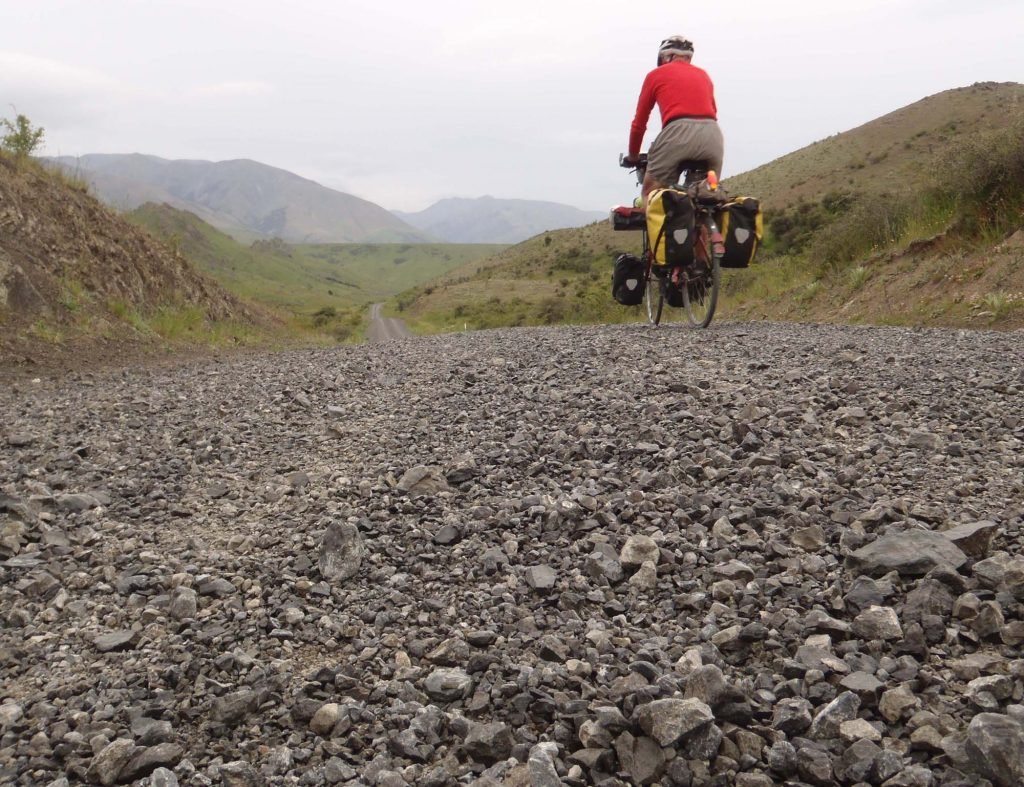Sarah Ley-Bucherer
January 2019
To begin with – what is a gravel road?
Sometimes defined as loose metal roads, they are usually minor roads in rural areas which can take the cyclist to heavenly spots whilst avoiding fast and busy sealed roads. However, the downside is the gravel can consist of small stones and pumice or broken rock, unevenly shaped, unevenly sized and often piled in uneven amounts ranging from very little to very thick swathes that are nearly impossible to ride a bike through!! The other part of the gravel road surface is the base material – anything from sand to clay to dirt, all of which vary depending on whether the road is wet or dry, newly gravelled or newly graded or left quite untended for some time. If heavy and fast vehicles use the road frequently then corrugations can be added to the mix.
From this description so far it’s not hard to understand that riding gravel takes concentration, thinking ahead, presence of mind and experience as well.
Being relatively inexperienced, I decided to ask some experts for tips and newbie riders what they wanted to know. These are in no particular order:
-
Look for and ride through the least depth of gravel – or if you can, riding in an experienced rider’s tracks helps. Car tyre tracks are useful to follow.
-
Braking – don’t overbrake, use more on front and less on the back than usual, be ready to release quickly if about to or starting to slide.
-
Camber of the road – assess the road ahead and try to choose the flatter, higher side on a steep uphill or downhill making sure to check that there is no oncoming traffic. Getting off and walking should always be seen as an option.
-
If riding with cleats, have one foot ready to quick release.
-
Give plenty of clearance to riders (don’t bunch up) as often they don’t know you are there, need to vary their speed, cross from one side of the road to another to pick the best path for themselves.
-
Be thoughtful of others around you. When passing give plenty of space so riders don’t feel hemmed in and call out passing right.
-
To stop the front tyre turning or jackknifing, it is important to keep up a reasonable momentum and keep pedalling on downhills, flat roads or through gravel mounds. A reasonable speed is your friend.
-
When crossing cattle stops or railway tracks ensure you attack them straight on (front-wheel at 90 degrees to object)
-
Avoid potholes particularly with water as the depth is an unknown.
-
Less tyre pressure is required than on sealed roads. But be careful not to let too much out as snake bite punctures can occur especially on sandy surfaces.
-
Tyres – if your normal pressure is about 70psi then reduce to about 40psi. The wider the tyre the better within reason. The technique is more important than the size of tyre.
-
Ride within your own comfort zone
-
Rider’s body – grip the handlebars lightly or firmly to suit conditions but not too rigid. Ideally engage your core muscles, bend your elbows and allow the bars and frame to move and vibrate in isolation from you the rider. Try to read and feel the road, react quickly without straining. Standing on the pedals provides better control and less vibration.
-
Good to know beforehand if possible the type of gravel ride that you will be on and whether your experience is suited to the conditions.
-
If you have a choice of the bike a stiff frame is better.
Below is a picture of a very experienced gravel rider!
